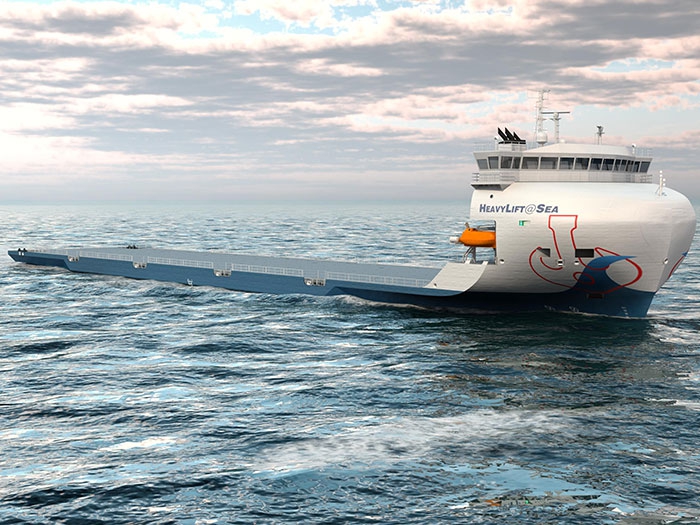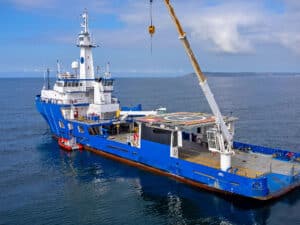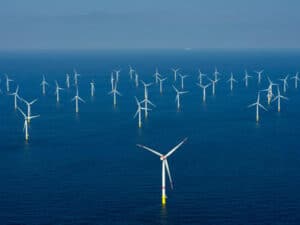
Deck carrier takes large loads from small ports through tight waterways
Written by Nick Blenkey
JANUARY 8, 2019 — Designed for offshore wind projects in the North Sea and Baltic, a heavy cargo deck carrier under construction in China has been designed for a range of customer requirements that included dealing with small ports, large cargo and narrow waterways.
Hendrik Gröne, Managing Director of Hamburg headquartered designer HeavyLift@Sea, says that the client for this project, a Hamburg based shipping company specializng in offshore wind projects, is already operating a deck carrier, that is now to be supplemented by this more flexible high-performance newbuild.
“The ship will initially transport wind power components for offshore wind turbines in the North Sea and Baltic Sea,” says Gröne.”This special area of application and the special ship’s type of employment required a very sophisticated, tailor-made design.”
The resulting heavy cargo deck carrier (DC 10000) has been designed to transport heavy cargo and large modules as well as components that cannot be lifted by crane due to their weight or structure – for example fragile steel structures for the oil and gas industry – but that are rolled onto the loading deck.
Since the ports at which the ship will call include a very small one in Denmark, the HeavyLift@Sea team simulated these conditions at a test facility in Copenhagen and included the result in the design’s calculations.
“There were a number of requirements for this ship that seemed to be mutually exclusive at first,” says Gröne. “The width of the required cargo deck had to be reconciled with a ship width that was small enough for the approach to this particularly small Danish port. At the same time, in order for the ship to pass through the Kiel Canal, it had to be taken into account that the deck couldn’t be wider than the waterline.”
The solution developed by the HeavyLift@Sea team is a vessel with a loading deck area of 3,600 sq. m, which is particularly large in relation to the ship’s overall dimensions of 148.50 m x 28 m.
Among other things, this was achieved by designing the superstructures with the deckhouse, which can accommodate a crew of 21, to be as compact as possible.
A special feature of the loading deck is its extremely high load-bearing capacity, both in terms of distributed load and point and linear loads. This ensures a high degree of flexibility when using the heavy goods transporter, which has a total load capacity of around 10,000 tons.
“In the first few years, the deck carrier will transport wind power components in the North and Baltic Seas, and we have optimized it for this purpose,” says Gröne. “At the same time, however, we also designed the ship to meet the shipping company’s need for flexible worldwide deployment and maximum utilization of such a special vessel.”
The heavy goods transporter is thus also prepared for equipping with DP2, making it suitable for work in highly complex offshore projects worldwide.
The deck carrier reaches a speed of around 12 knots and to optimize the diesel-electric propulsion to the ship’s size and achieve maximum maneuverability, the generators under the aft deck were divided in an unconventional way, that also resulted in high energy efficiency.
The steel cutting ceremony for the heavy cargo deck carrier with the basic design DC 10000 was held at the end of November 2018; delivery is scheduled for the end of
2019. Meanwhile, the HeavyLift@Sea team has already won a contract for its next basic design: a special ship for offshore wind operations.





Leave a Reply
You must be logged in to post a comment.